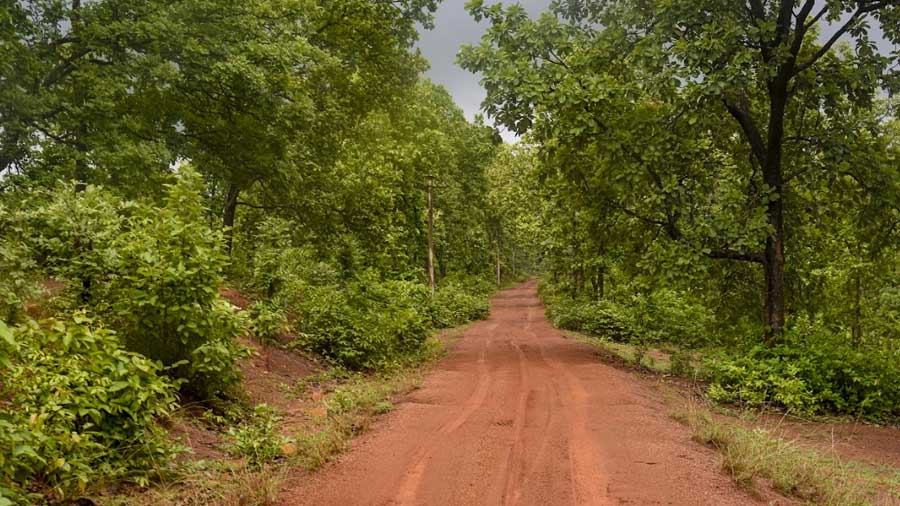A four-hour drive north-west from Kolkata leads to a lush forest, and a refreshing break for the weekend. Joypur in Bankura district is a beautiful destination with a dense forest teeming with sal, palash, mahua and neem trees. It is a lovely place for birdwatchers, and if you are lucky, you may even get to see elephants and deer in the jungle. The neighbouring villages have age-old heritage structures too. For more adventurous visitors, a trip into the dense jungle to locate a British-built telegraph tower or to check out an abandoned British-era runway are other options.
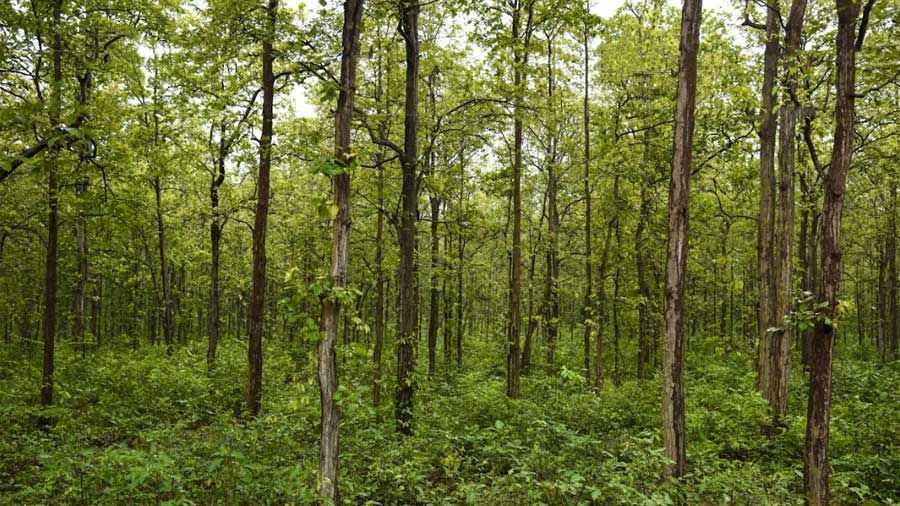
The forest teems with sal, palash, mahua and neem trees Anjan Kumar Kundu
The drive from Kolkata to Joypur is through congested roads, until finally leaving Arambag town via the bridge on Dwarakeswar River and heading towards Bishnupur. If travellers are interested in old zamindari estates of Bengal, they can take a break in Kotulpur, about 23 km ahead of Joypur forest. Apart from a grand gate unlike anywhere else in Bengal, the local Bhadra family has several temples, including their main Sridhar Temple, inside a fortified enclosure.
Just after Joypur village, the atmosphere changes, with dense jungle on both sides of the road. A drive of around 700 metres brings visitors to a large waterbody named Samudra Bandh. A right turn from here leads to the Joypur watchtower. The observatory has erratic timings, so it depends on luck to get entry inside for a good aerial view.
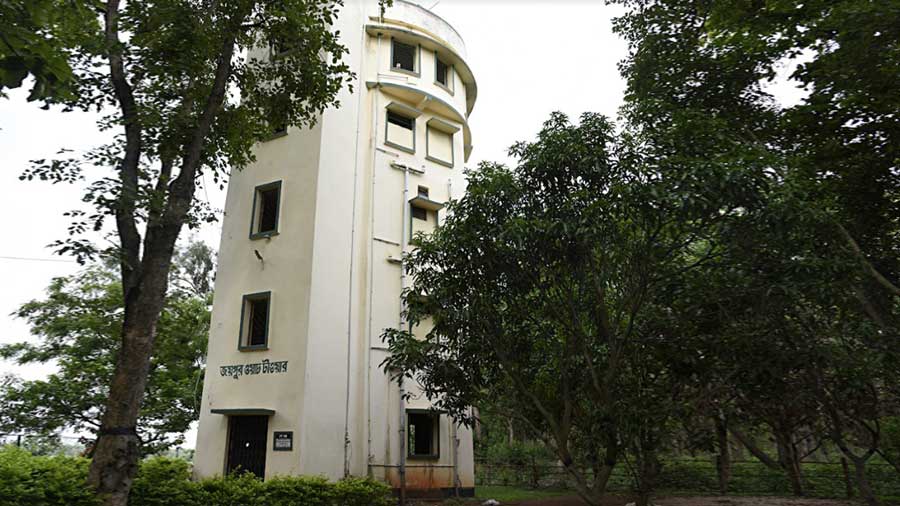
The Joypur watchtower Anjan Kumar Kundu
For a more intriguing jungle trail, instead of reaching Samudra Bandh, one can drive straight on the main road for about four kms with forests on both sides. After this drive, there is a narrow motorable road on the left. This six-km-long drive through the dense forest is thoroughly enjoyable. After taking this road, keep a lookout on the right to locate a British-era, brick-built telegraph tower inside the jungle. Often mistaken to be a tower built by the Malla Kings, this was actually one of the 45 towers that constituted the Kolkata-Varanasi optical telegraph line operated using Semaphore signals before invention of the electrical telegraph.
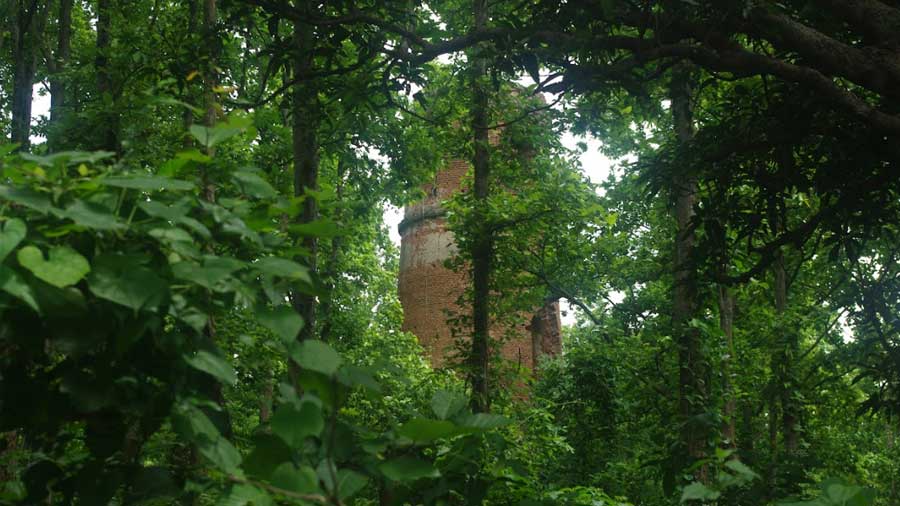
A British-era, brick-built telegraph tower inside the jungle – often mistaken to be a tower built by the Malla Kings
Venturing in to reach the tower has some risk and shouldn’t be tried during or post-monsoon.
The drive through this jungle path is scenic, but one should enter this stretch before 4pm. Catching a sight of a deer, fox or even elephant is quite possible. For birdwatchers, this is a great place to look out for winged visitors. After crossing a railway track, the road leads to an abandoned runway dating to the British era.
Other than the forest itself, venturing into the nearby Joypur village and its adjacent Gokulnagar can be rewarding. The 19th-century built Navaratna Temples with their triple entrances, at Dutta Para and De Para, are two heritage structures of Joypur. The detailed terracotta panels highlighting events from the Puranas, Ramayana, Mahabharata and Mangal Kavyas are a treat to see.
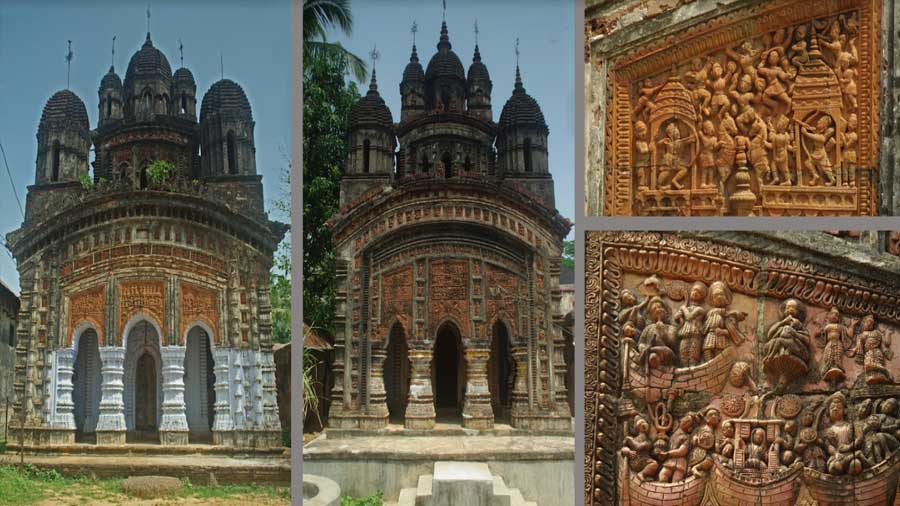
(Left and centre) The temples at Joypur village’s Dutta Para and De Para; (right) terracotta panels of the temples
Just 1 km from Joypur is Gokulnagar, which is worth visiting thanks to its 1643-built five-pinnacled Gokulchand Temple, made of laterite stone. The temple is around 45-feet high and is the tallest stone-built temple in Bankura. It has arched gateways on its three sides. The temple stands on a raised platform with a circumambulatory outer corridor on all sides — like all prominent temples of Bishnupur. The temple is located inside a fortified wall with an impressive gate.

The five-pinnacled laterite temple of Gokulchand at Gokulnagar
After a tour of the jungle and a sumptuous lunch at a nearby eatery, if a visitor decides to stay for the weekend, there are also some accommodation facilities here. So, if you don’t have the time for a tour to north Bengal, a trip to the lush jungle of Joypur can also be adventurous, fulfilling and refreshing.
How to go
By rail: Reach Bishnupur by Santragachi Purulia Superfast Express in the morning around 9.30am. Hire a vehicle from Bishnupur Railway Station and drive to Joypur, which is 11 km to the east.
By road: Drive past Dankuni and take the left towards Mosat. Cross Chapadanga More and drive past Arambag. Cross the Dwarakeshwar River bridge and drive towards Bishnupur. Joypur is 128 km north-west of Kolkata and 46 km from Arambag.
Where to eat and stay
Until recent times, Banalata resort was the only option to stay in Joypur. But now, other accommodations have come up too. There are many decent eateries just outside Banalata resort on the road.
Amitabha Gupta is a travel writer and a photographer who specializes in heritage and history of West Bengal. His work has been featured in many magazines and newspapers — both online and offline. He also conducts heritage walks and tours in and around Kolkata.
